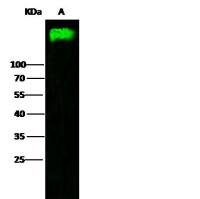Developing Anti-HER2/neu Single-Chain Fv Fragments from Phage Display Libraries
互联网
685
One of the major failures of conventional cancer therapy has been the inability to achieve a sufficient differential in toxicity between normal and neoplastic tissues. Since hybridoma technology was established (1 ), monoclonal antibodies (MAbs) have been raised against a variety of tumor-associated antigens to overcome the lack of specificity. Unfortunately, MAbs have for the most part, failed to fulfill the expectations of being the desired “magic bullets” capable of directing cytotoxic effects strictly to malignant cells. The notable exception has been in the treatment of B-cell lymphomas that have exhibited an exciting response rate when treated with unconjugated (2 ) and radiolabeled (3 ) MAbs. However, similar progress has not been observed in the treatment of ovarian carcinoma and other solid malignancies. These tumors contain disordered vasculature and lack draining lymphatics, resulting in elevated interstitial pressure. In this environment, the diffusion of a relatively large, 150 kDa IgG molecule is limited to 1 mm in 2-3 d (4 ). In contrast, smaller molecules such as 50 kDa Fab fragments exhibit faster movement through the tumor interstitium, on the order of 1 to 2 mm per day.









